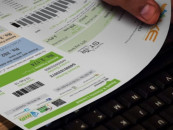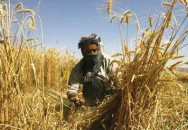No respite in the rupee fall
Depreciates Rs0.65 against US dollar on Wednesday to a new all-time low

Pakistani currency continued to lose ground and fell to a new all-time low at Rs173.47 against the US dollar in the inter-bank market on Wednesday following fresh depreciation of Rs0.65 (or 0.40%).
The rupee has maintained the downtrend for the past five months. It has lost almost 14% (or Rs21.2) to date compared to the 22-month high of Rs152.27 recorded in May, according to the central bank data.
Since global commodity prices have more than doubled over the past few months, research houses have revised their estimates for the rupee-dollar parity to Rs176-178 by the end of June 2022 compared to their early projection of around Rs170.
The global price hike is expected to keep demand for dollar at higher levels in Pakistan in order to pay for imports.
Besides, gold soared Rs2,500 to a new one-year high of Rs122,200 per tola (11.66 grams) after it recovered in the global market and its imports became expensive in the wake of depreciation of the local currency.
“The latest decline in the rupee came after the central bank reported a current account deficit of $1.11 billion for September 2021, which suggested that the demand for foreign currency may remain high to pay for expensive imports,” AA Gold Commodities Director Adnan Agar said while talking to The Express Tribune.
Secondly, “importers continued to resort to panic buying of dollars as there was uncertainty about the resumption of International Monetary Fund’s (IMF) $6 billion loan programme,” said Exchange Companies Association of Pakistan (ECAP) President Malik Bostan.
Talks between Pakistan and IMF teams had initially remained inconclusive. Though both sides claim that negotiations are heading in the positive direction, they have failed to give a timeline for the resumption of loan programme.
Read Rupee dives to new record low in inter-bank market
Earlier, experts had said that the rupee would stabilise once the country resumed the loan programme.
“We now expect the rupee to trade in the range of 175-178 per dollar by June 2022,” Topline Securities Director Research Syed Atif Zafar said in a commentary.
“We have increased our (global) commodity price assumptions, due to which we now expect imports of goods to come in at around $65 billion (in current fiscal year 2022) compared to our previous estimate of about $61 billion,” he said.Earlier, JS Global revised the projection for rupee-dollar parity to Rs175-76 by the end of June 2022.
“Pakistan’s imports will remain high considering that a number of businesses have ordered plant equipment and machinery from abroad to set up new production lines and expand the existing ones,” Bostan said.
Businesses have acquired subsidised loans totaling around Rs436 billion for industrialisation under the central bank’s Temporary Economic Refinance Facility (TERF). “Such imports will keep demand for dollar on the higher side,” he said.
Besides, prices of a number of global commodities, imported by Pakistan to meet local demand, have increased by more than twofold. These commodities include petroleum products, liquefied natural gas, coal, buses, trucks and cooking oil.
Gold shines
Gold is shining once again and has been moving between $1,700-1,800 an ounce for the past several months in the world market.
“It recovered $20 per ounce (31.10 grams) to $1,780 in the international market on Wednesday after touching a low of $1,760 a day ago,” Agar said.
“The price of gold in Pakistan has doubled due to partial recovery in its price in the global market and rupee depreciation.”
He said that gold might move beyond $1,820-1,840 per ounce if the US reported a poor jobs data in the first week of November.
Published in The Express Tribune, October 21st, 2021.
Like Business on Facebook, follow @TribuneBiz on Twitter to stay informed and join in the conversation.



















COMMENTS
Comments are moderated and generally will be posted if they are on-topic and not abusive.
For more information, please see our Comments FAQ